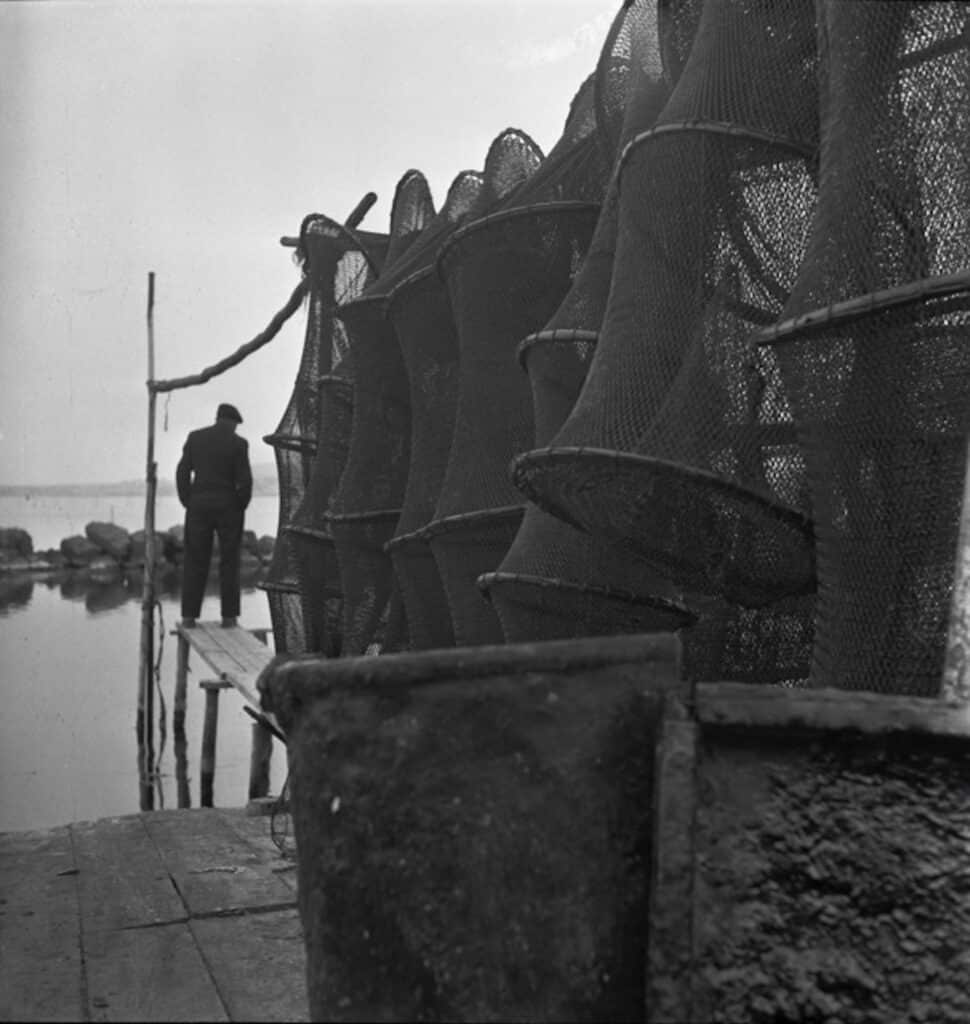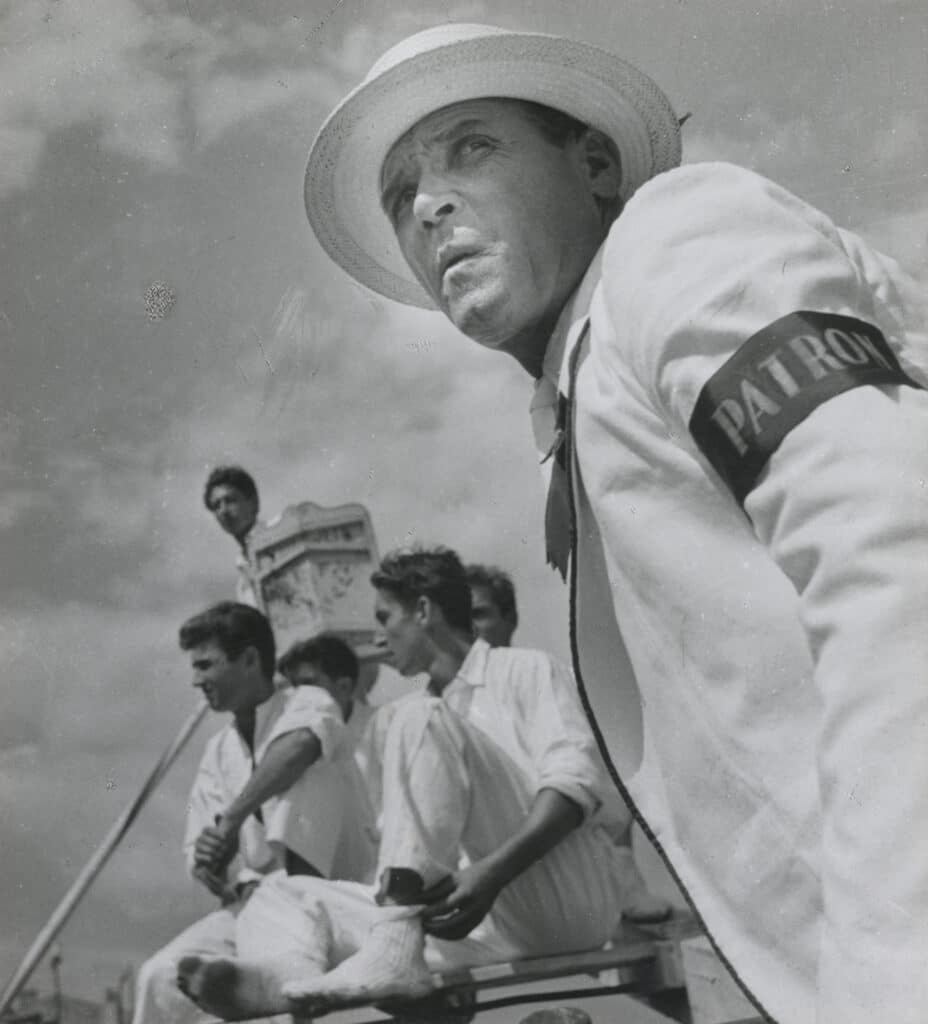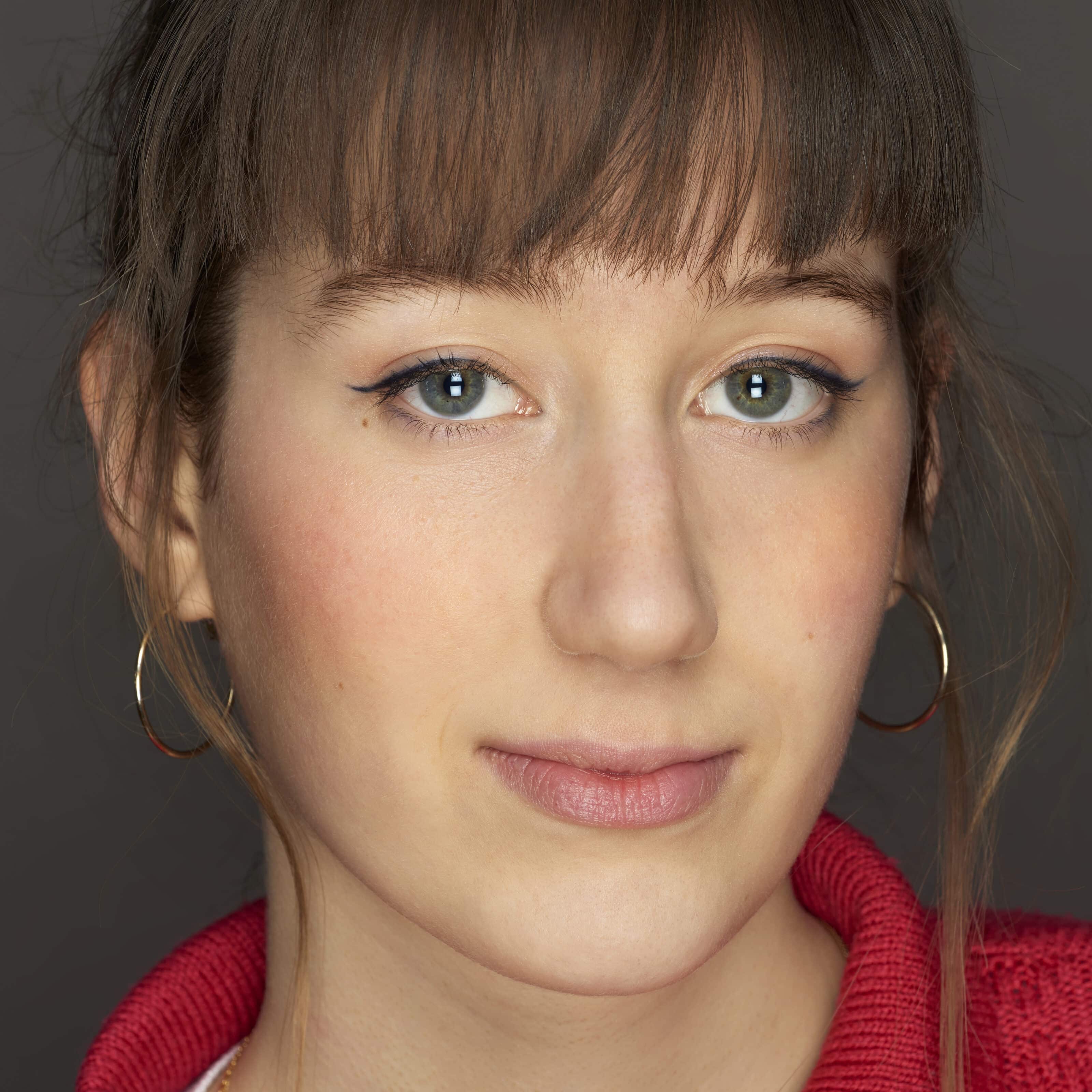Henri Cartier-Bresson described cinema as “the after-image.” Photography, on the other hand, comes before. Straddling immobility, fixedness, and movement, these two image regimes find common ground at the Rencontres d’Arles.
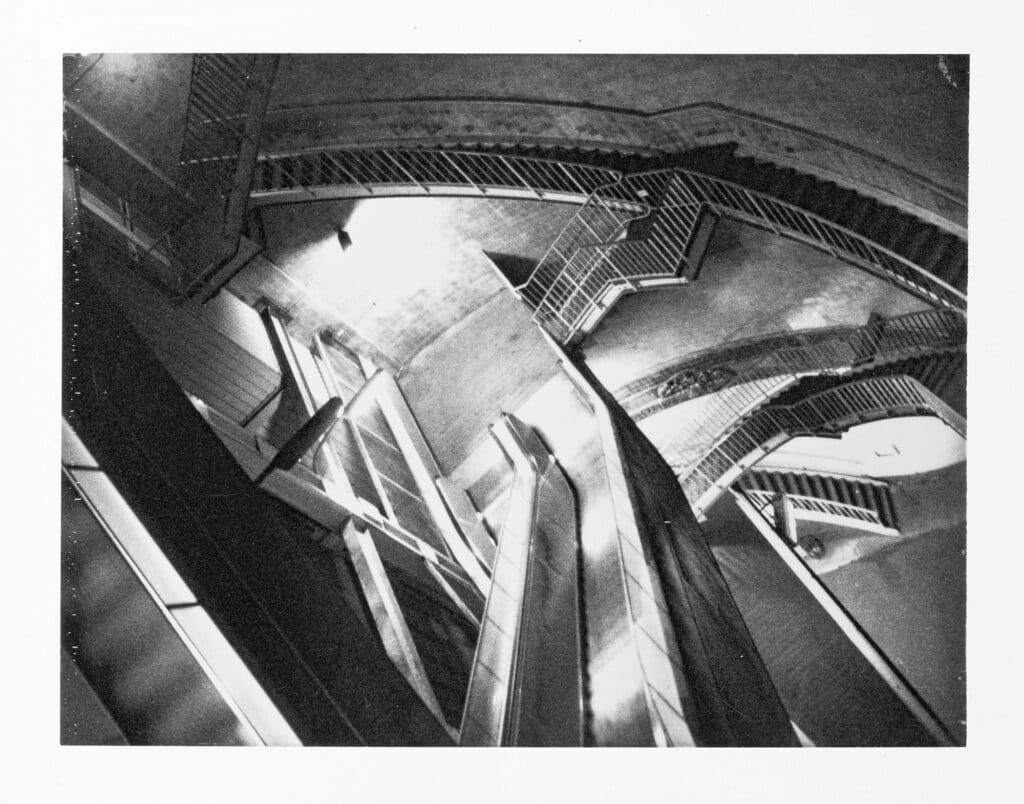
From the photographic image to the moving image
1955: Agnès Varda was just twenty-five when she began her career as a filmmaker. Her first film, La Pointe Courte, tells the story of a young couple’s relationship and the daily life in a fishing village in Sète. Inspired by the structure of William Faulkner’s 1939 short story collection, The Wild Palms, she filmed the inhabitants and the houses almost like a documentary.
The landscape became a protagonist in its own right. It must be said that Varda was no stranger to the great Mediterranean beaches. On May 10, 1940, her family fled the bombings and ambulance sirens in Brussels. Seven of them packed into a car, they sought refuge in Sète. There, among the fishermen, she honed her skills mending fishing nets. This apprenticeship enabled her to get a job as an oarswoman in Corsica when she had turned twenty.
Her alma mater was the École Technique de Photographie et de Cinématographie at rue Vaugirard in Paris. She apprenticed in a photo lab, retouching prints by hand using gouache. Then her mother gave her first camera, a Rolleiflex. With it, she captured the quays of Sète, her adopted city. She would return every year, retracing her childhood steps. Having set aside the fishing nets, she now wove the threads of her memory.
The contact sheets on view at the Saint Trophime Cloister encapsulate a vision that started out with photography. Marking the genesis of La Pointe Courte, they were used by the filmmaker as anchor points, and they reveal her desire to lend concrete form to lived impressions. In The Third Life of Agnès Varda, the filmmaker declares: “Photography keeps teaching me how to make movies. And cinema constantly reminds me that it films movement in vain, since every image becomes a memory, and every memory becomes fixed and frozen.”
When it came to fixing her own memories, Agnès Varda loved the scrapbook. Drawings, stamps, postcard collages, press clippings, and invitations—the scrapbook is a cross between a photo album and a diary. Like Varda, many artists have used this format to create new worlds. It’s in these pages that the magic happens. Ideas, still in embryonic form, emerge from the filmmakers’ minds and come to life on paper. Bertrand Mandico begins by sketching his films in what he calls the “diaries of his unconscious”, before actually making them. Chris Marker archives his surrealist collages in his “imaginary museum”.
Collected together, the images reveal themselves as epiphanies, often at the origin of cinema’s greatest masterpieces. Stanley Kubrick’s scrapbook is a case in point, compiling 824 genuine articles from English newspapers, listing atrocities and news items that echo the plot of The Shining. For a few seconds, the scrapbook appears on screen on writer Jack Torrrance’s desk, next to his typewriter. Through a collective exhibition at the Espace Van Gogh, Arles pays tribute to this cinematic heritage and to the filmmakers’ imagination.
![Pedro Costa. Caderno Casa de Lava [Chã das Caldeiras, Fogo Island, Cape Verde, photos by Pedro Costa and Eyes Without a Face, film by Georges Franju (1960)]. Courtesy of the artist.](https://www.blind-magazine.com/wp-content/uploads/2023/07/pedro-costa.-caderno-casa-de-lava-cha-das-caldeiras-fogo-island-cape-verde-photos-by-pedro-costa-and-eyes-without-a-face-film-by-georges-franju-1960.-courtesy-of-the-artist-1024x733.jpg)
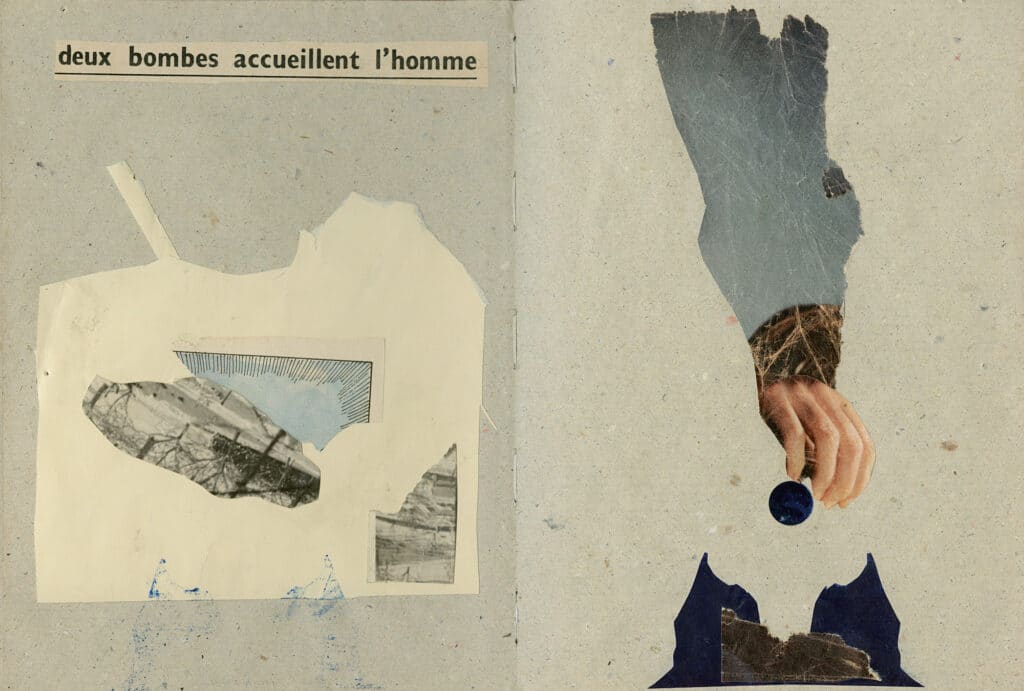
Quiet on the set!
Still photography has always accompanied the history of cinema: it tells the story of filmmaking, documents the movies, and promotes. Featured at the grocery store Monoprix, the exhibition Théâtre optique takes a look at set photography as a photographic genre in its own right. Pierre Zucca’s “tableaus vivants” come to life, from set to screen.
A cinephile and close friend of Jean Eustache and Jean-André Fieschi, Pierre Zucca began his career as a set photographer on Georges Franju’s Judex. Merely twenty years old, he was documenting the French New Wave. From 1963 through the late 1970s, he was involved in over thirty-five films, working for some of the great masters: Jacques Rivette, Romain Gary, Alfred Hitchcock, and Claude Chabrol. The latter described him as “furtive and discreet.” Zucca was no stranger to film sets. First a photographer, he also tried his hand at directing, offering Fabrice Luchini his first major role in Vincent mit l’âne dans un pré (et s’en vint dans l’autre) (1976), followed by more secondary roles in Rouge-gorge (1985), and Alouette, je te plumerai (1988).
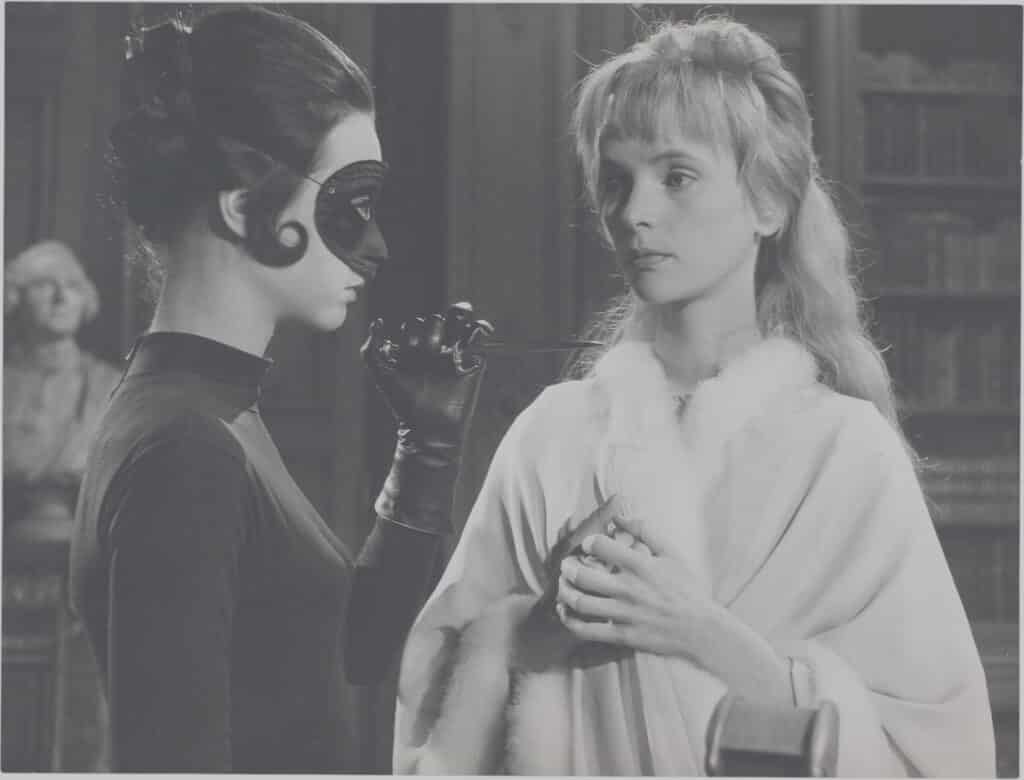
His meeting with Truffaut on the set of L’Enfant sauvage, in 1969, marked the beginning of a long collaboration. He accompanied Truffaut on five films, and even tried his hand at comedy in La Nuit américaine (1972), in which he played the set photographer.
Immersed in auteur cinema, Zucca worked with Jacques Rivette. He portrayed the interaction between Jean-Pierre Kalfon and Bulle Ogier in L’Amour fou, in 1969. Two years later, in Out 1: Noli me tangere, Bulle Ogier once again faces the mirror, her reflection multiplied ad infinitum. Despite a perilously long shoot—the film lasts almost 12 hours and 40 minutes—Zucca captured the spirit and essence of the film, while also giving us a glimpse behind the scenes. The frame, the lighting, the gestures, the looks: everything must give the impression that the image has been extracted from the film.
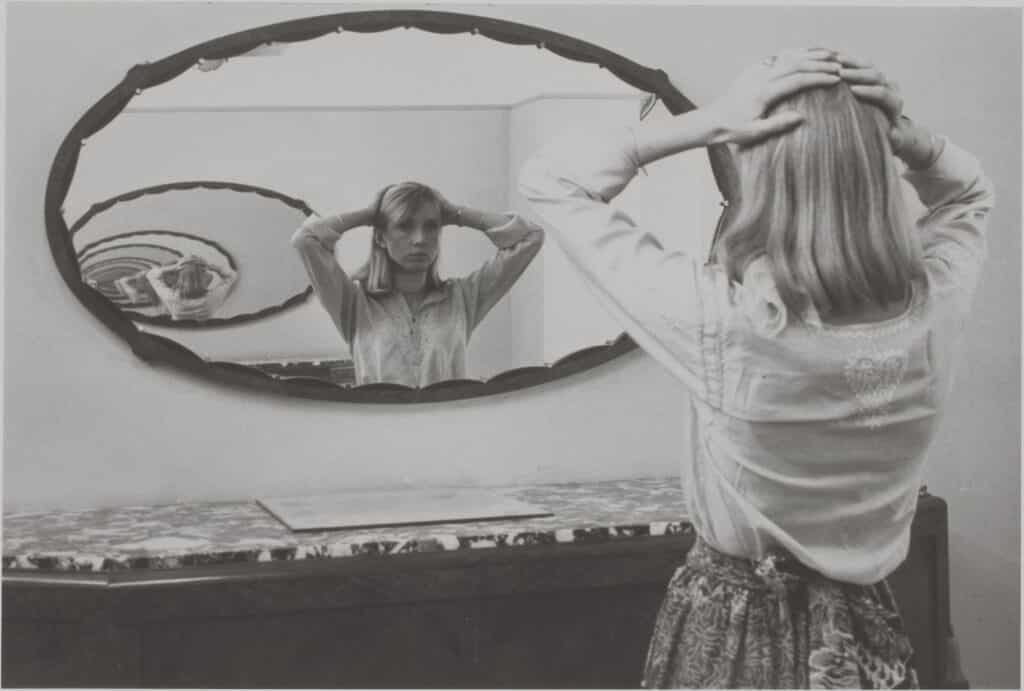
A decisive moment captured on the go, the image serves as a point of reference. It sets the scene. More than as a means of testing frames and ideas, German filmmaker Wim Wenders sees photography as a vital part of the narrative, and doesn’t hesitate to incorporate Polaroid photographs into the plot of his films.
In Alice in the Cities, Philip Winter, the protagonist and the director’s on-screen alter ego, is a journalist on assignment in the United States. Rather than writing, he crisscrosses the landscape, taking hundreds of photos with his Polaroid camera, only to be fired by his editor. In The American Friend, Tom Ripley, the main character played by Dennis Hopper, is an art dealer who uses Polaroids as incriminating photographic evidence to manipulate his interlocutors. The little vignettes also take us behind the scenes. Blurring the lines, the Polaroids blur the boundary between fiction and reality. Is it Tom Ripley or Dennis Hopper gazing pensively at his burning cigarette?
At Espace Van Gogh, Wim Wenders pinned his Polaroids on the big wall, offering shots taken between the 1960s and the 1980s, selected from his book Instant Stories, published in 2017. The images range from behind-the-scene shots to records of his travels, a collection of diary-like snapshots. The exhibition is a love letter to Polaroid.
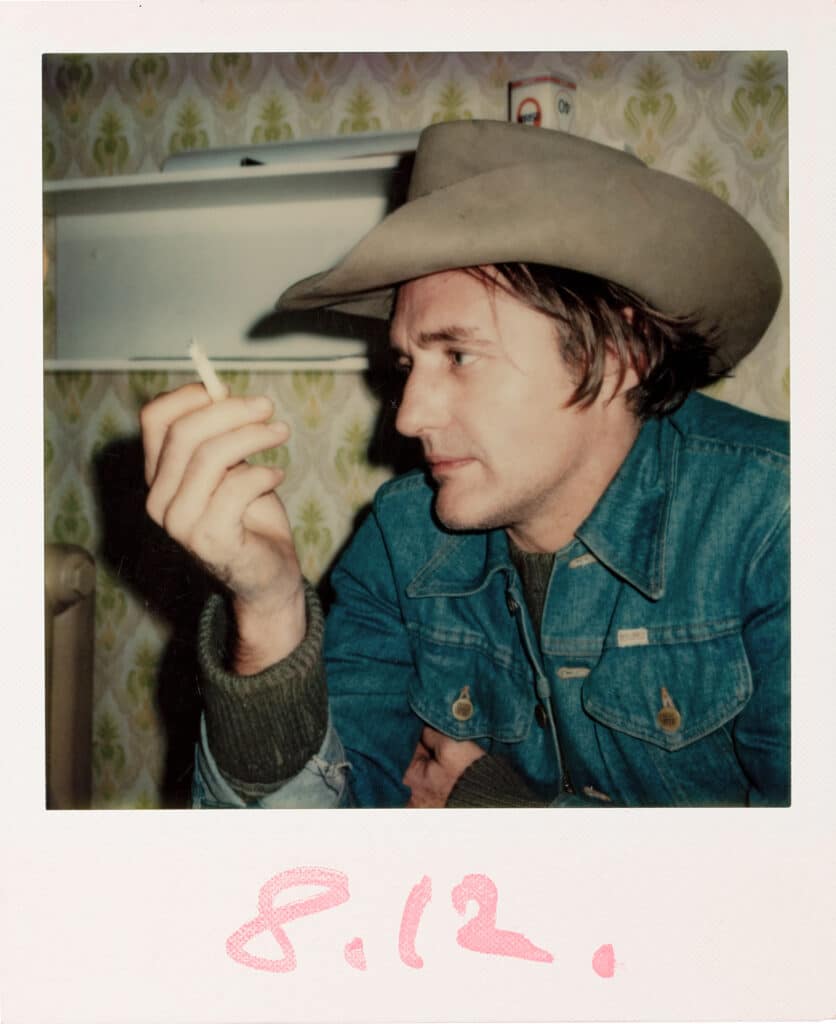
SCRAPBOOKS, Dans l’imaginaire des cinéastes, Matthieu Orléan – Delpire & Co. 240 pages, €49.
Agnès Varda. La pointe courte, des photographies au film, Delpire & Co, 72 pages, €20.
Exhibition at the Rencontres de la photographie d’Arles, Espace Van Gogh, from July to September 2023.

